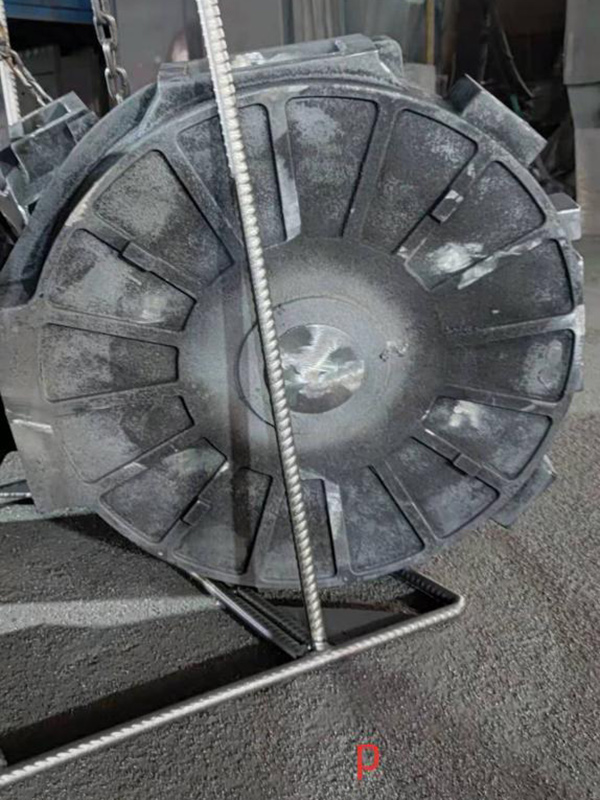The Significance of Sand-Cast Iron in Modern Manufacturing
Sand-cast iron has played a pivotal role in the manufacturing world for centuries. This process, which involves pouring molten iron into sand molds to create various metal objects, offers a unique blend of versatility, durability, and economy that has kept it in high demand. As we delve into the significance of sand-cast iron, we discover not only its historical context but also its contemporary applications and future prospects.
A Brief Historical Overview
The technique of sand casting dates back to antiquity, with evidence of its use in ancient Egypt and China. Artisans created intricate designs and robust structures that have withstood the ravages of time. Over the years, the sand-casting process evolved, but its core principles remain unchanged. This method provides distinct advantages, such as the ability to produce large and complex shapes, making it ideal for a wide range of applications—from automotive parts to decorative art.
The process begins with the creation of a mold made from a mixture of sand and a binding agent. This mold is formed around a pattern that represents the final product. Once the sand has set, the pattern is removed, leaving a cavity in the shape of the intended object. Molten iron is then poured into this cavity and allowed to cool, solidify, and take on the form of the mold. The result is a robust cast iron piece that can be further refined or used immediately.
Applications in Modern Industry
Today, sand-cast iron is ubiquitous in various sectors. In the automotive industry, for example, sand-cast iron is used to manufacture engine blocks, transmission cases, and other critical components that demand high strength and thermal resistance. The ability to create intricate shapes and sized parts means that manufacturers can produce lightweight yet durable components that enhance vehicle performance and fuel efficiency.
Outside of automotive applications, sand-cast iron is extensively used in construction and infrastructure. Steel beams and support structures frequently incorporate cast iron due to its exceptional compressive strength. Additionally, decorative elements such as railings, gates, and garden ornaments commonly utilize sand-cast iron, allowing for both aesthetic appeal and functional durability.
sand cast iron

The versatility of sand-cast iron extends beyond traditional industries. In recent years, there has been a surge in interest regarding renewable energy applications. Wind turbine components, for instance, often require reliable materials that can withstand harsh environmental conditions. Sand-cast iron provides a solution, offering durability and resistance to corrosion.
Economic Benefits
One of the critical advantages of sand-cast iron lies in its cost-effectiveness. The materials used in sand casting are generally cheaper than those required for other casting methods, such as investment casting or die casting. This affordability allows manufacturers to lower production costs, ultimately benefiting consumers. Moreover, the sand casting process is less labor-intensive and can be automated to varying extents, creating efficiencies that further drive down expenses.
Another economic aspect is sustainability. The sand used in the casting process can be recycled and reused multiple times, reducing waste and minimizing environmental impact. Moreover, as awareness of sustainable practices increases, industries that prioritize green manufacturing methods are likely to lean towards sand casting as a viable option.
Future Prospects
Looking forward, the future of sand-cast iron appears bright. Innovations in technology and materials science may enhance the sand casting process, improving precision, reducing lead times, and expanding the range of applications. Additionally, advances in 3D printing technologies are beginning to integrate with traditional sand-casting techniques, opening new avenues for customization and rapid prototyping.
As industries continue to seek out resilient, cost-effective, and environmentally sustainable materials, sand-cast iron is poised to remain a crucial player in manufacturing. Its rich history, combined with the ability to adapt and meet modern demands, ensures that this tried-and-true technique will endure and thrive in the years to come.
In conclusion, sand-cast iron embodies a remarkable synthesis of tradition and innovation. Its widespread application across various industries, coupled with its economic and environmental benefits, underscores its enduring relevance. As we advance into an era of technological progress and sustainability, sand-cast iron will undoubtedly continue to serve as a cornerstone of modern manufacturing.
Post time:12월 . 15, 2024 12:05
Next:Exploring the Applications and Benefits of Sand Casting in Various Industries
